Universal Design for Learning in The Future VLE
Here are my slides from my recent short presentation as part of UCD EdTecX 2018. The EdTECx talks are jointly hosted by UCD IT Services and UCD Teaching & Learning in conjunction with the UCD network of Educational Technologists.
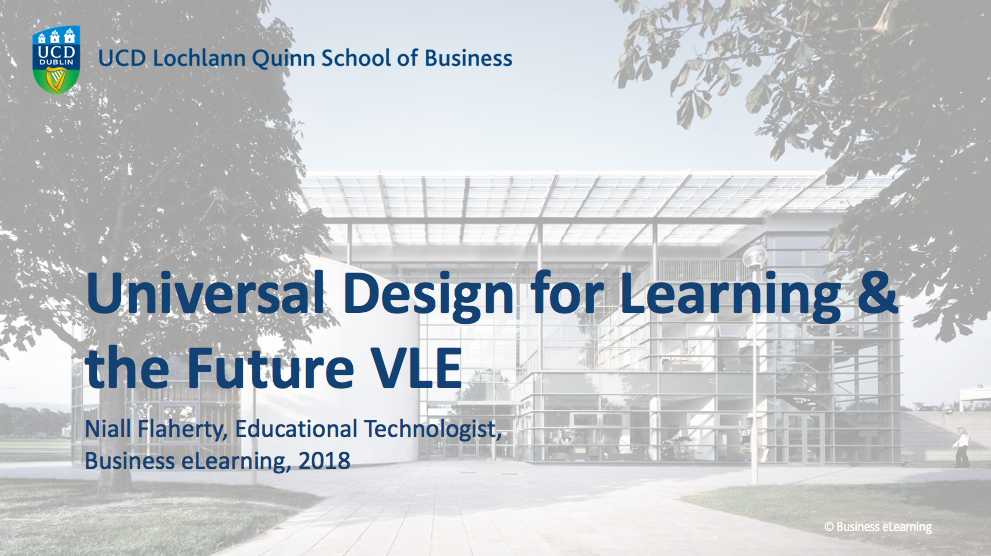
Universal Design for Learning provides a framework which could be very useful when designing the display of content for the Future VLE.
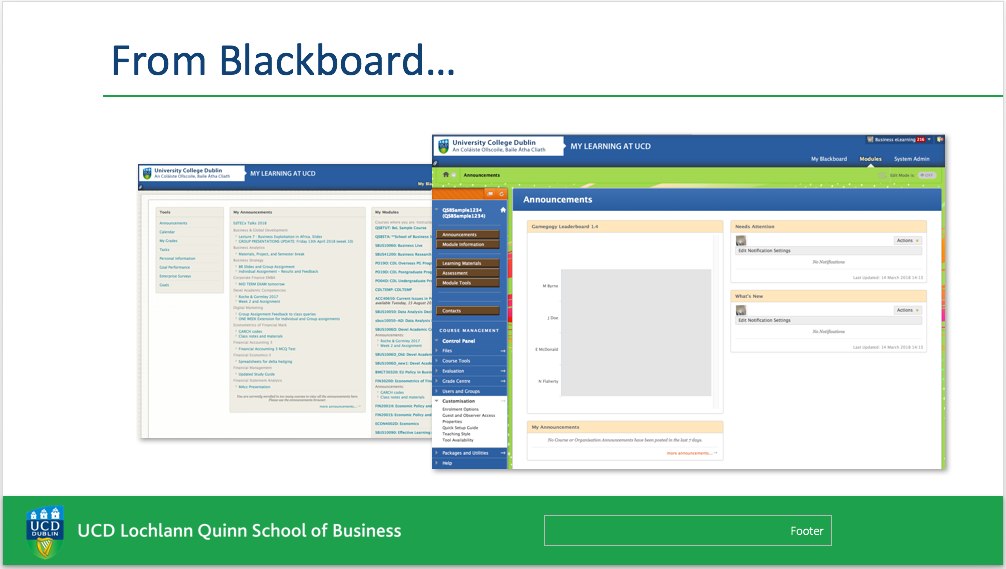
Blackboard could be characterised as cluttered. It has no unified visual theme (instructors can choose their own) and no meaningful visual hierarchy. There is poor typography and layout throughout. Students struggle with finding content, and instructors struggle with the email load this creates.
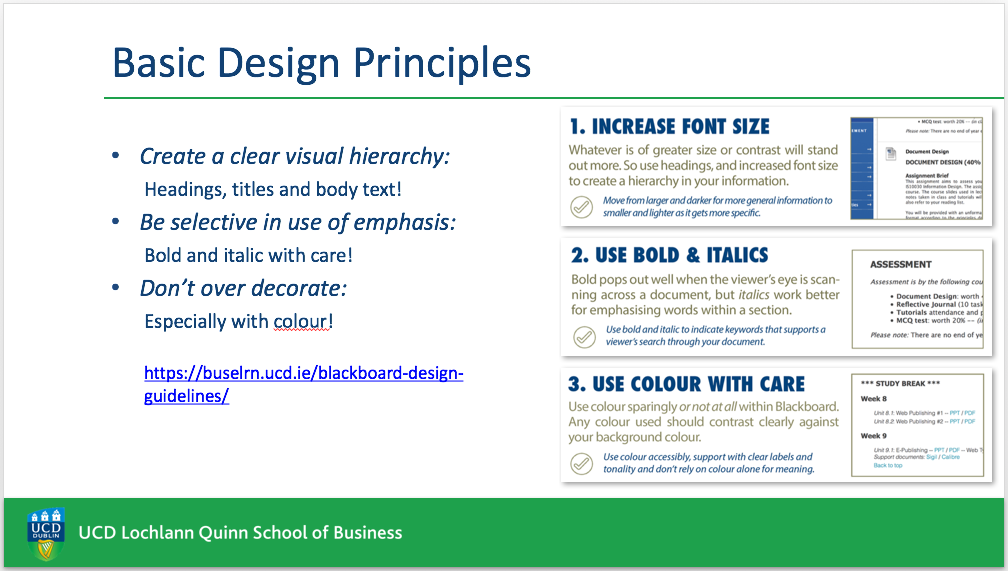
Instructors can employ Basic Design Principles to address theme weaknesses, and can improve visual hierarchy & typography. Scale and proportion / emphasis / selective use of colour etc. can all help but may be extra work (without much incentive or reward) and the effort would have to be duplicated for all content. Some skill is required to produce consistently well-designed content. So basic design principles are useful but difficult to maintain, especially when the system provides poor support for it.
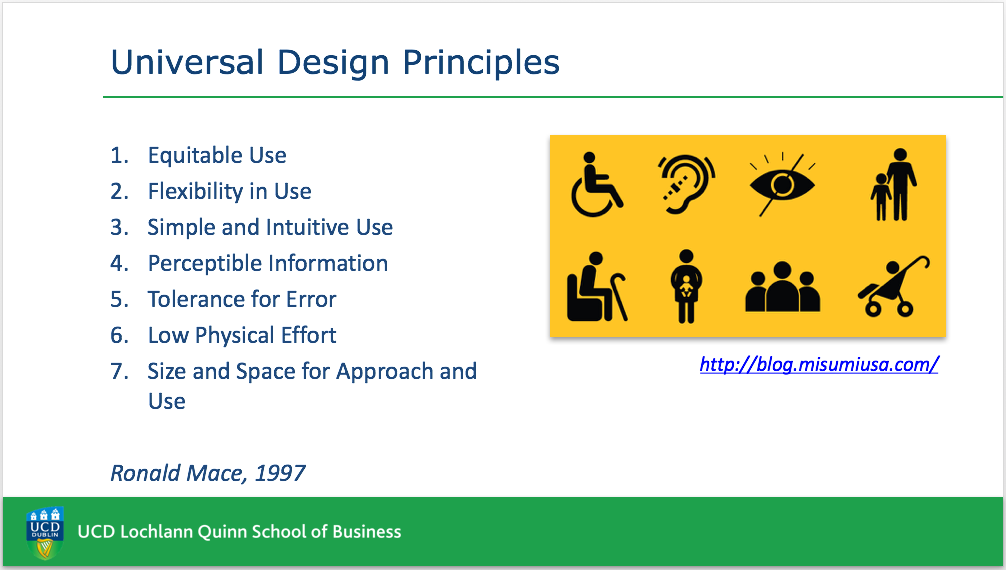
More broadly we can apply Universal Design theory to our consideration of the LMS environment. Initially outlined by Ronald Mace (et al) in 1997 to help design spaces and products suitable and accessible for all:
- Equitable Use (accessible to all)
- Flexibility in Use (provide choice in content format and channel)
- Simple and Intuitive Use (consistent, clear hierarchy)
- Perceptible Information (legibility, describable)
- Tolerance for Error (provide warnings, simplify paths)
- Low Physical Effort (minimise repetition)
- Size and Space for Approach and Use (don’t crowd me, bro!)
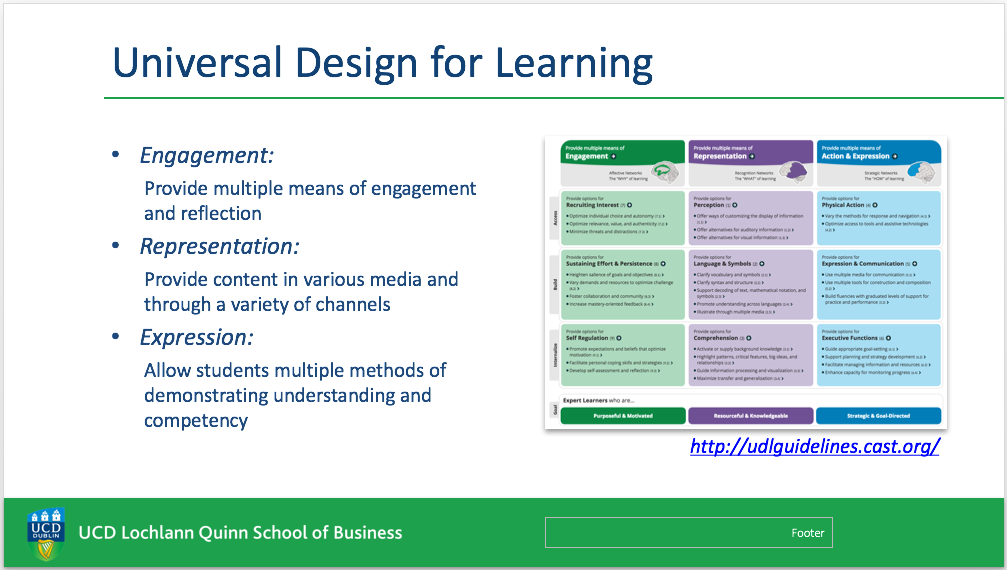
Many categories of design have developed their own flavour of Universal Design. Usually this involves the 7 principles of UD getting translated for the new category of design, but CAST have simplified their design principles to just 3. At its simplest it is about encouraging engagement and reflection, representing content in multiple ways, and allowing multiple modes of expression to demonstrate competence, but it expands out to take into account almost any diverse need including:
- Sensory or physical disabilities
- Learning difficulties
- Autism spectrum disorders
- Language barriers
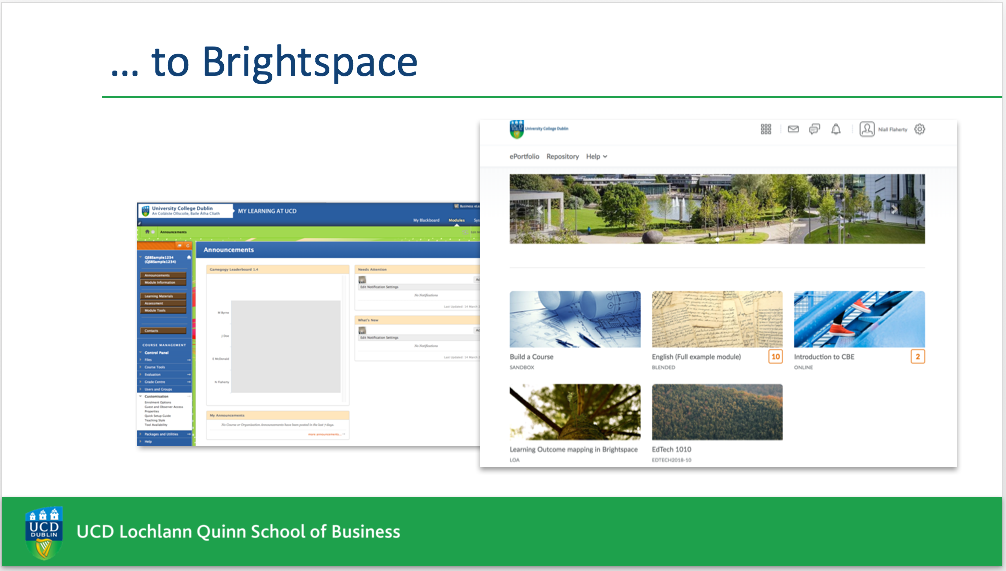
D2L have designed Brightspace with strong Basic Design Principles rolled in and D2L’s stated goal is to design for pedagogy, so going forward this heavy lifting should be done for us by the LMS. However moving content from Blackboard to Brighspace it would be very useful to consider the Universal Design for Learning framework and the principles of engagement, representation and expression.
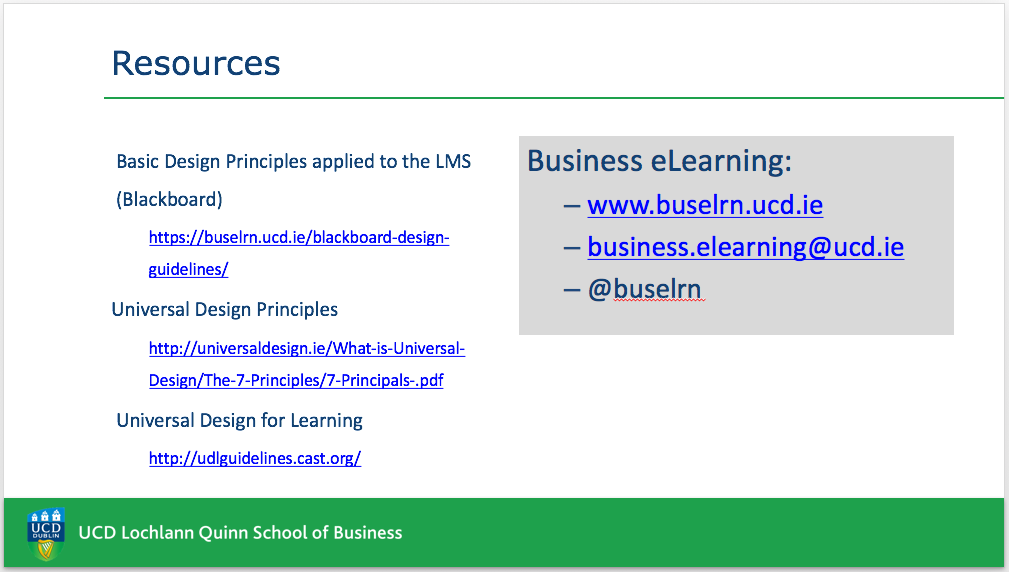
With that in mind here are 3 resources you can use to best structure and present your content for diverse student needs in the new LMS:
Basic Design Principles https://buselrn.ucd.ie/blackboard-design-guidelines/
Universal Design Principles http://universaldesign.ie/What-is-Universal-Design/The-7-Principles/7-Principals-.pdf
Universal Design for Learning http://udlguidelines.cast.org/
Niall Flaherty, 2018.


